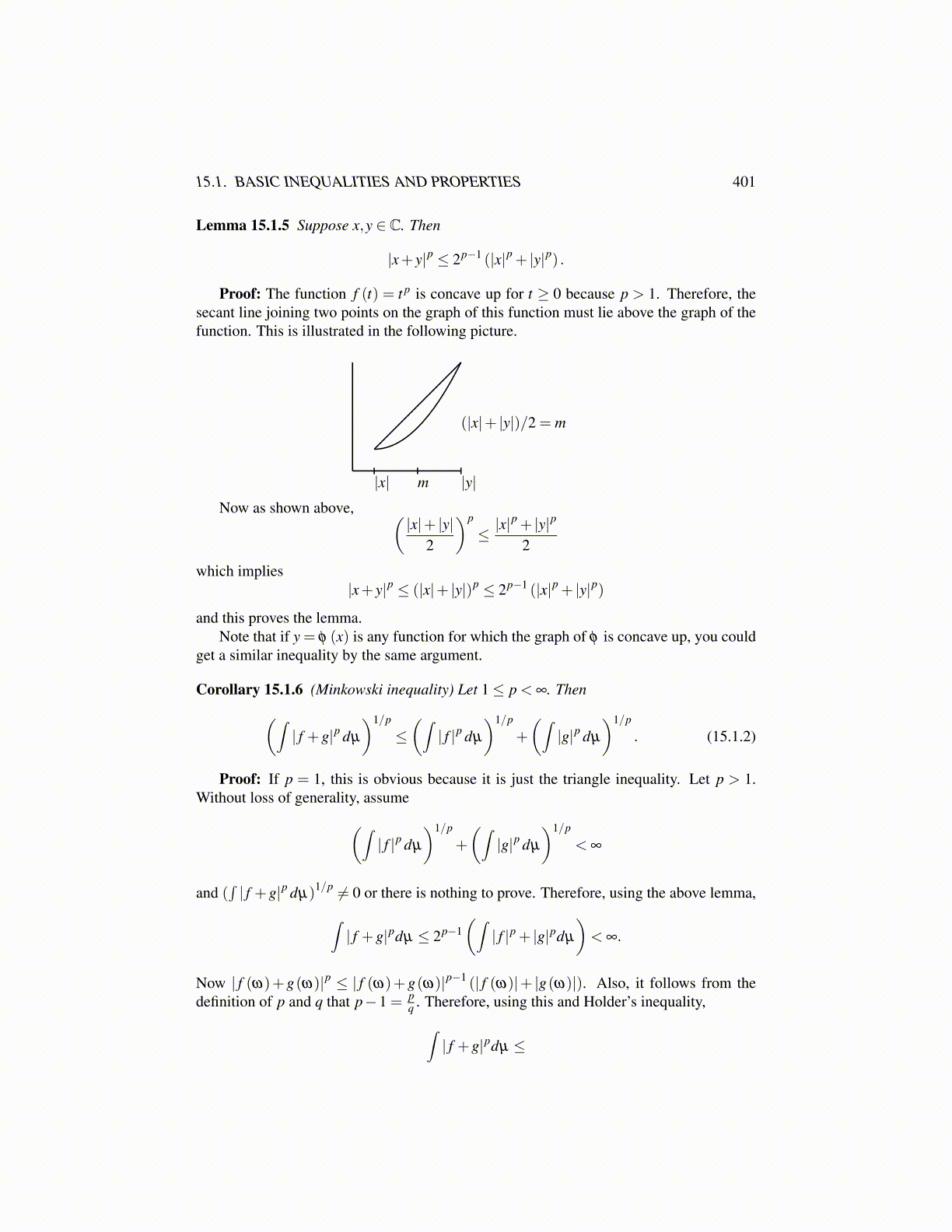
15.1. BASIC INEQUALITIES AND PROPERTIES 401
Lemma 15.1.5 Suppose x,y ∈ C. Then
|x+ y|p ≤ 2p−1 (|x|p + |y|p) .
Proof: The function f (t) = t p is concave up for t ≥ 0 because p > 1. Therefore, thesecant line joining two points on the graph of this function must lie above the graph of thefunction. This is illustrated in the following picture.
|x| |y|m
(|x|+ |y|)/2 = m
Now as shown above, (|x|+ |y|
2
)p
≤ |x|p + |y|p
2
which implies|x+ y|p ≤ (|x|+ |y|)p ≤ 2p−1 (|x|p + |y|p)
and this proves the lemma.Note that if y = φ (x) is any function for which the graph of φ is concave up, you could
get a similar inequality by the same argument.
Corollary 15.1.6 (Minkowski inequality) Let 1≤ p < ∞. Then(∫| f +g|p dµ
)1/p
≤(∫| f |p dµ
)1/p
+
(∫|g|p dµ
)1/p
. (15.1.2)
Proof: If p = 1, this is obvious because it is just the triangle inequality. Let p > 1.Without loss of generality, assume(∫
| f |p dµ
)1/p
+
(∫|g|p dµ
)1/p
< ∞
and (∫| f +g|p dµ)1/p ̸= 0 or there is nothing to prove. Therefore, using the above lemma,∫
| f +g|pdµ ≤ 2p−1(∫| f |p + |g|pdµ
)< ∞.
Now | f (ω)+g(ω)|p ≤ | f (ω)+g(ω)|p−1 (| f (ω)|+ |g(ω)|). Also, it follows from thedefinition of p and q that p−1 = p
q . Therefore, using this and Holder’s inequality,∫| f +g|pdµ ≤